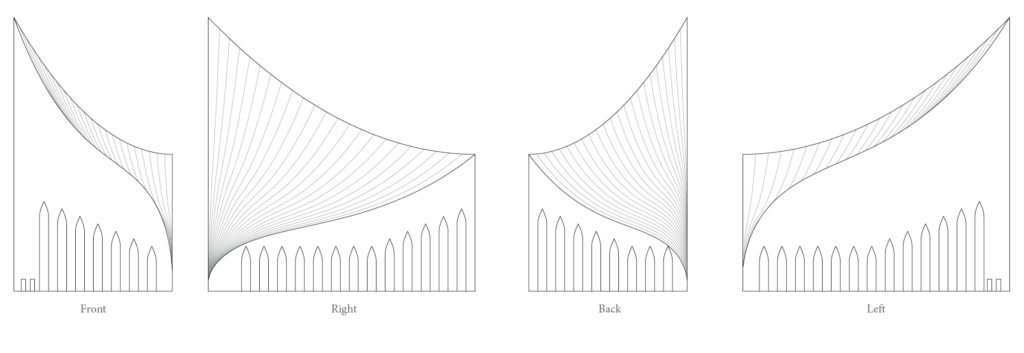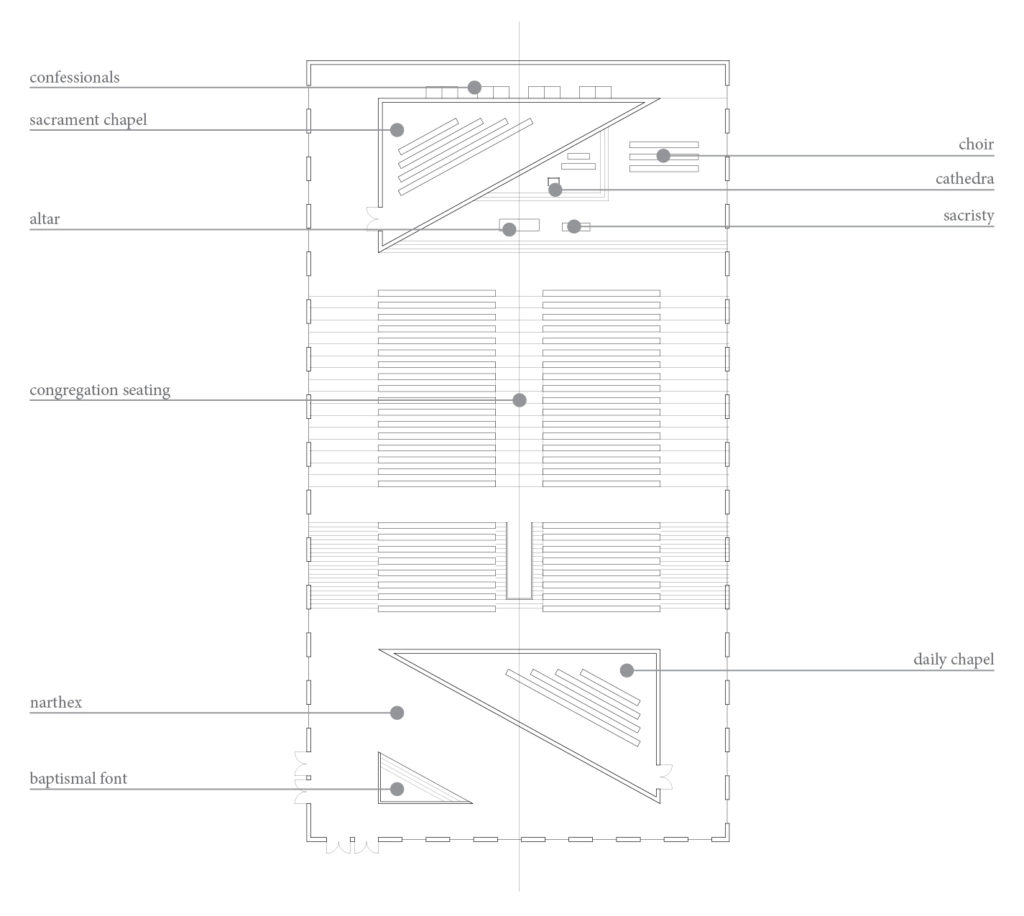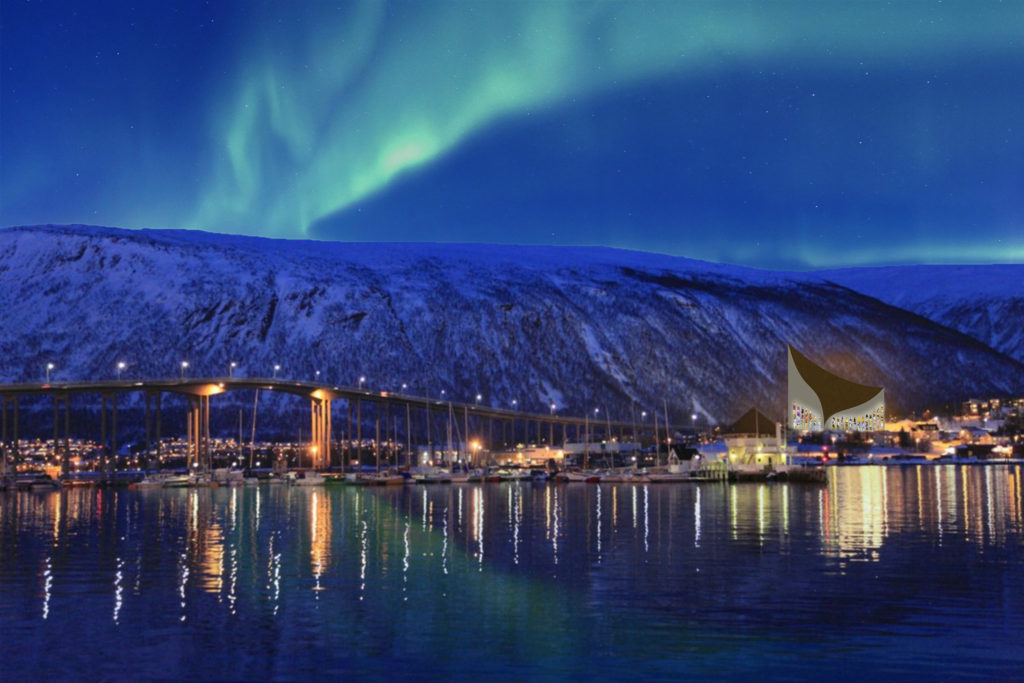institution: harvard graduate school of design
course: making sacred space
professor: christine smith
time: spring 2016
project: a roman catholic cathedral
location: tromsø, norway
Tromsø, Norway resides over 190 miles north of the Arctic circle. The sun does not rise in the winter and the sun does not set in the summer; therefore, the locals have a very unique relationship with light. This period in winter where the sun never rises is colloquially referred to as the “blåtimen” or the “blue period,” due to the blue shade of sun light. Because of this, the cathedral design should be considered for both times of lightness and darkness.
A survey of other Norwegian cathedrals shows a collection of sharply angled silhouettes, often as steeples on top of a cubic form. The new cathedral embraces this vernacular but with a less medieval reverence.
Positioned in the same site as the former Cathedral of the Arctic Sea, the new cathedral would be propped up on a the hill and on axis with the Tromsøbrua bridge, acting as a beacon for the faith and visible from across the Tromsøysundet strait and from miles away.
The vertical planes that make up the four sides of an implied box serve as an opportunity to provide multiple apertures for stained glass. These surfaces are made of white stone, reminiscent of the stone of medieval gothic structures. but the white color allows more reflected light and brighter interiors. The curvilinear and undulating surface of the roof provides a modern contrast with the verticality of the stone by seemingly defying gravity. Wooden supports can provide enough flexibility to create this complex surface.





